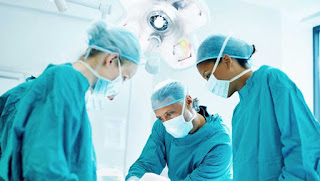What Is Parotid Surgery?
Parotid surgery, also known as parotidectomy, is a surgical procedure that involves the removal of the parotid gland, which is one of the largest of the three pairs of salivary glands located in the face. This procedure is performed to treat various conditions affecting the parotid gland, including tumors, cysts, stones, and infections. In this article, we will discuss the indications, preparation, and recovery process for parotid surgery.
Indications for Parotid Surgery:
1. Tumors: The most common indication for parotid surgery is the presence of a tumor in the parotid gland. This can include benign tumors such as pleomorphic adenoma and Warthin's tumor, as well as malignant tumors such as squamous cell carcinoma and adenoid cystic carcinoma.
2. Cysts: Cysts in the parotid gland can also be removed through parotidectomy. These cysts can cause swelling and discomfort, and may need to be removed for both cosmetic and medical reasons.
3. Stones: Salivary stones can form in the parotid gland and cause blockages, leading to pain, swelling, and infection. Parotidectomy may be necessary to remove these stones and prevent recurrent infections.
4. Infections: Chronic infections in the parotid gland can also be treated through parotidectomy. The procedure involves removing the infected tissue and draining any abscesses, which can help prevent recurrent infections.
Preparation for Parotid Surgery:
Before undergoing parotid surgery, patients should have a thorough evaluation by their plastic surgeon, including a physical examination and medical history review. Patients may also need to undergo imaging studies, such as CT scans or MRI, to determine the extent of the condition affecting the parotid gland.
Patients should also inform their plastic surgeon of any medications they are taking, including herbal supplements and over-the-counter drugs, as well as any allergies they may have. They should also stop taking any blood-thinning medications, such as aspirin or ibuprofen, for several days prior to the procedure.
Parotidectomy is typically performed under general anesthesia and may take several hours to complete. The procedure can be performed as either a superficial or a total parotidectomy, depending on the size and location of the lesion.
Recovery from Parotid Surgery:
After parotidectomy, patients will have a dressing or bandage placed over the incision site, which will need to be kept clean and dry. The plastic surgeon may also place a drain near the incision site to help remove any excess fluid.
Patients may experience swelling, discomfort, and bruising around the incision site, which can be managed with pain medication prescribed by the plastic surgeon. The dressing and bandage should be changed regularly, and the incision site should be kept clean and dry.
Most patients can return to their normal activities within 7 to 10 days after parotidectomy, although they should avoid heavy lifting, strenuous exercise, and exposure to direct sunlight for several weeks. They should also follow a soft diet and avoid any foods or liquids that are hot, spicy, or acidic for several days after the procedure.
In conclusion, parotidectomy is a surgical procedure that involves the removal of the parotid gland. This procedure is performed to treat various conditions affecting the parotid gland, including tumors, cysts, stones, and infections.




Comments
Post a Comment